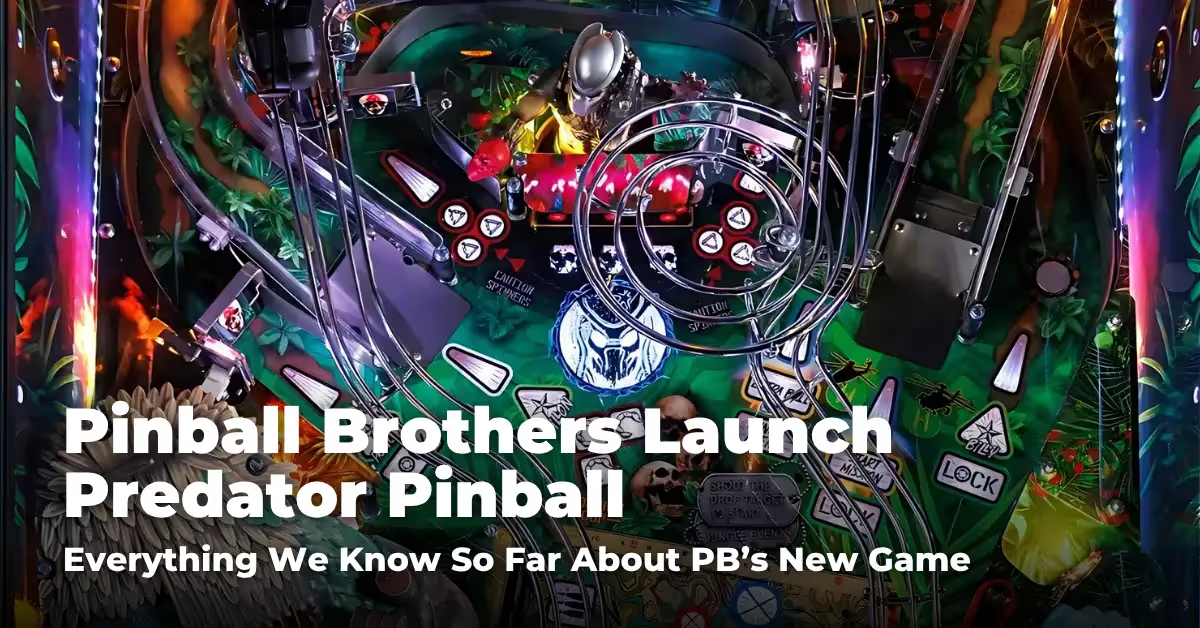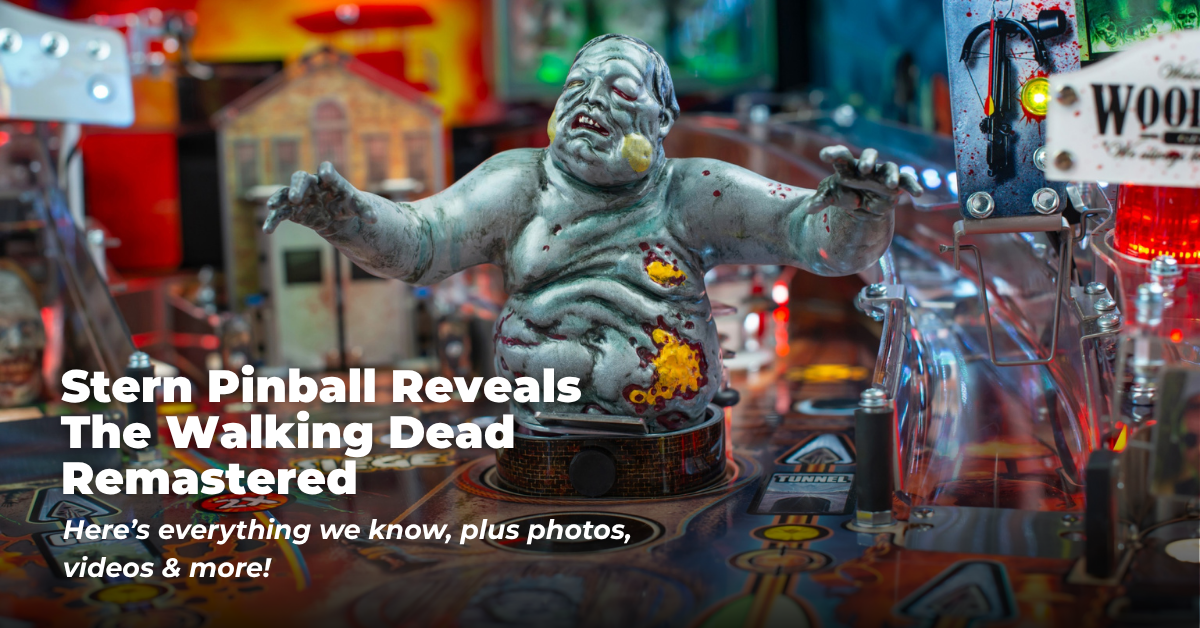Stern’s Fall of the Empire is the Definitive Star Wars Pinball Experience
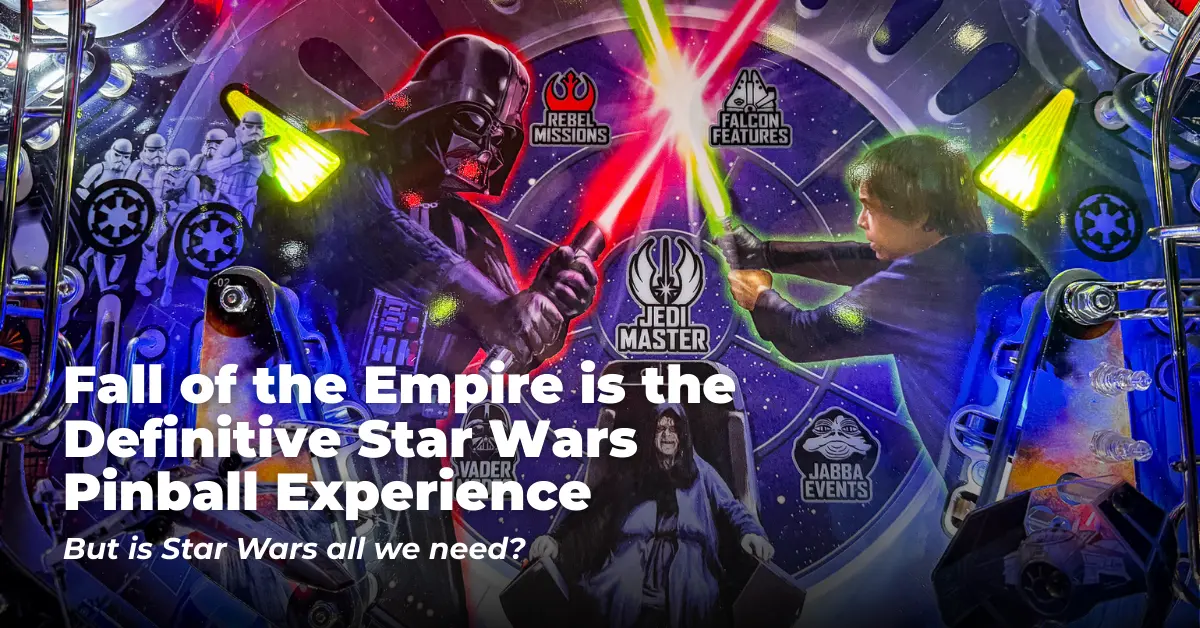
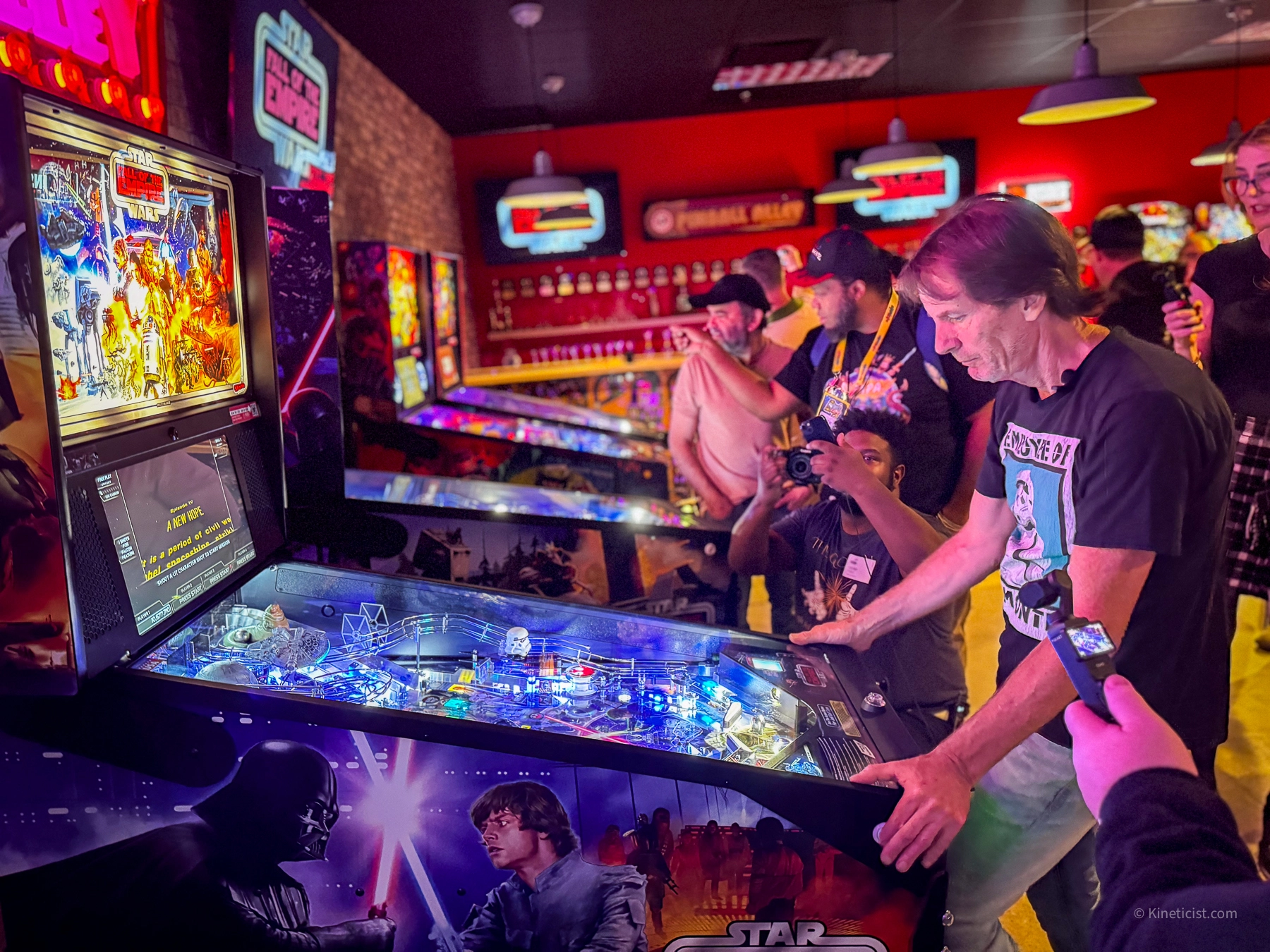
On Wednesday, a select group of pinball media and content creators were granted exclusive pre-release access to Stern Pinball’s newest cornerstone release, Star Wars: Fall of the Empire. Designed by stalwart pinball designer John Borg with Raymond Davidson leading code development for the first time, the game sees the Stern team revisiting the familiar territory of the original Star Wars film trilogy (A New Hope, The Empire Strikes Back, and Return of the Jedi).
This time, however, the focus shifts towards content from the films Empire Strikes Back and Return of the Jedi, as players explore key moments and battles from the two films that, taken together, depict what Stern has dubbed the “Fall of the Empire.”
When I asked Chief Creative Officer George Gomez about the name, he explained that they wanted to give the game its own identity and differentiate it from their prior products. It’s an interesting detail, as Disney had to be convinced of the approach, as, understandably, they wouldn’t simply let any licensee create their own non-canon names for new products.
A name is a small thing in pinball, but it sets the tone for the rest of the machine, and signals that the game is of the world and character of the original trilogy. In another timeline, one could imagine Fall of the Empire being a canon title for one of the original films.
And if Star Wars: Fall of the Empire knocks anything out of the park, it’s the care taken to fully integrate the game with the world and iconography of the original trilogy films.
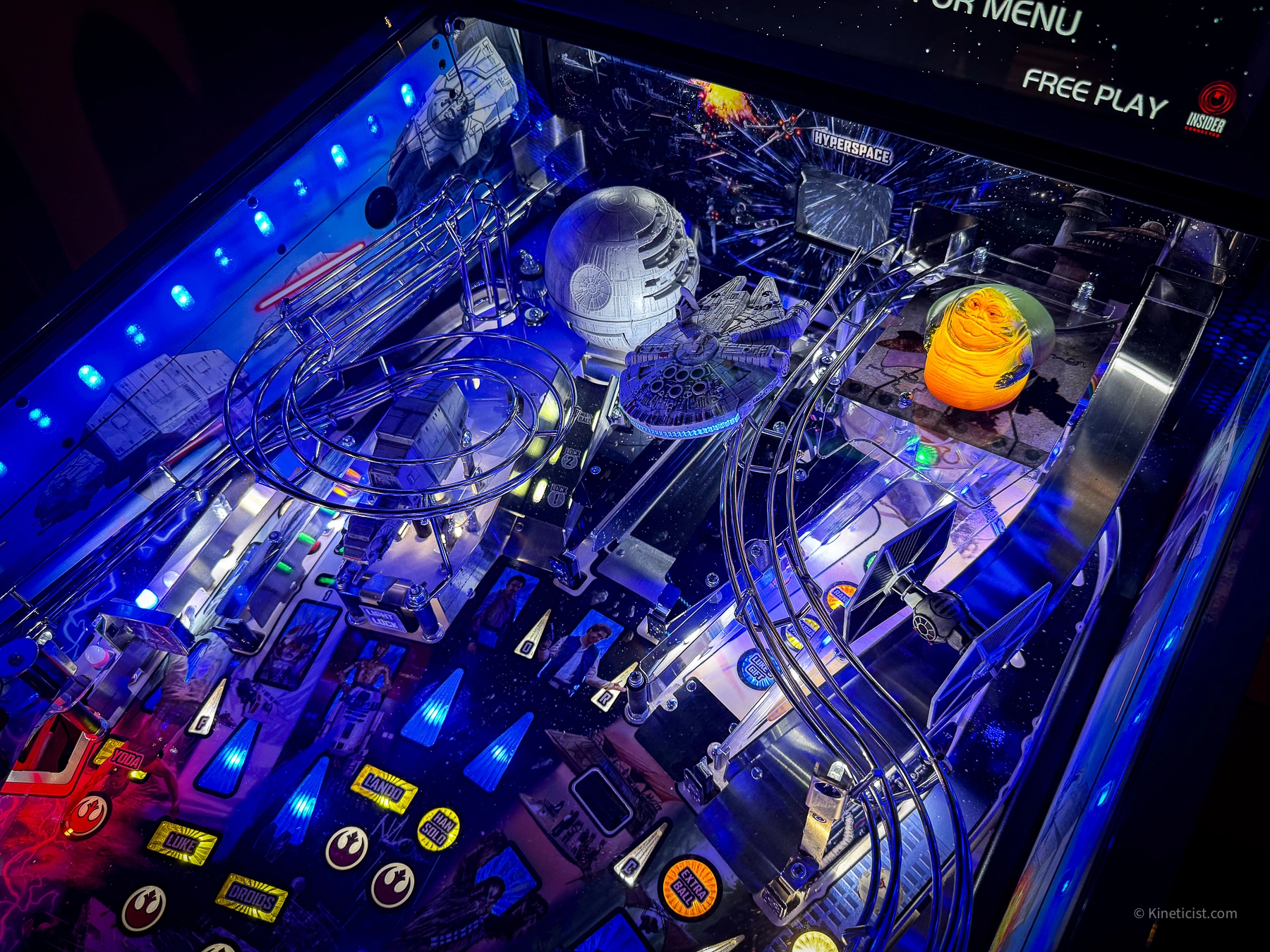
You want a ton of film clips and synced audio? Check. Fall of the Empire has over 1,000 film clips.
You want iconic John Williams soundtrack songs and custom C-3PO callouts? Check.
Original, hand-drawn artwork inspired by old Star Wars movie posters and VHS boxes? Check.
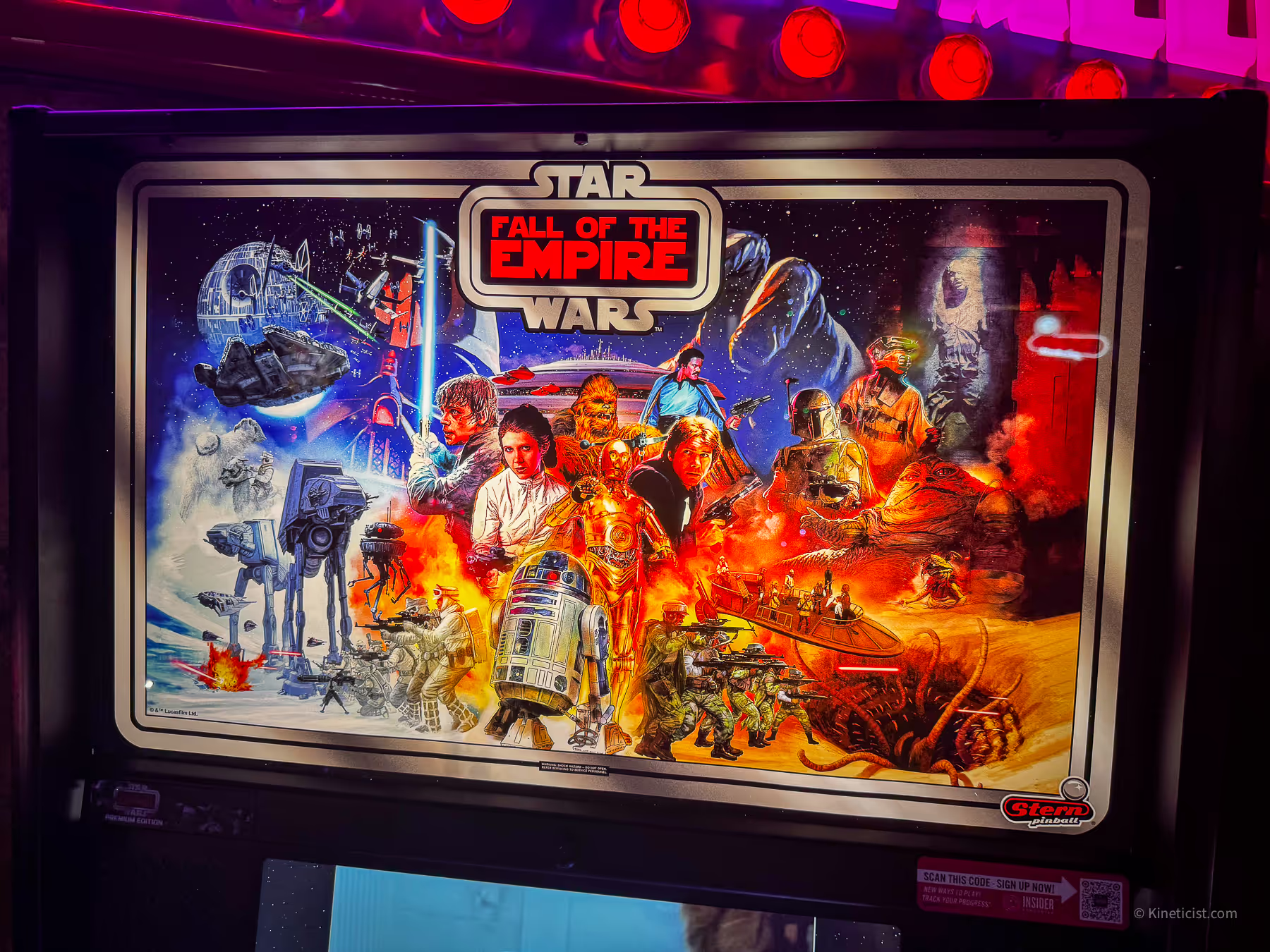
All your favorite characters on the playfield and playable moments from the film? Check.
It really is the definitive Star Wars original trilogy pinball experience. The one that, if you were a Star Wars super fan and you had to choose just one Star Wars pin to occupy a coveted lineup spot in your home arcade, this would be the one.
Star Wars vs Star Wars
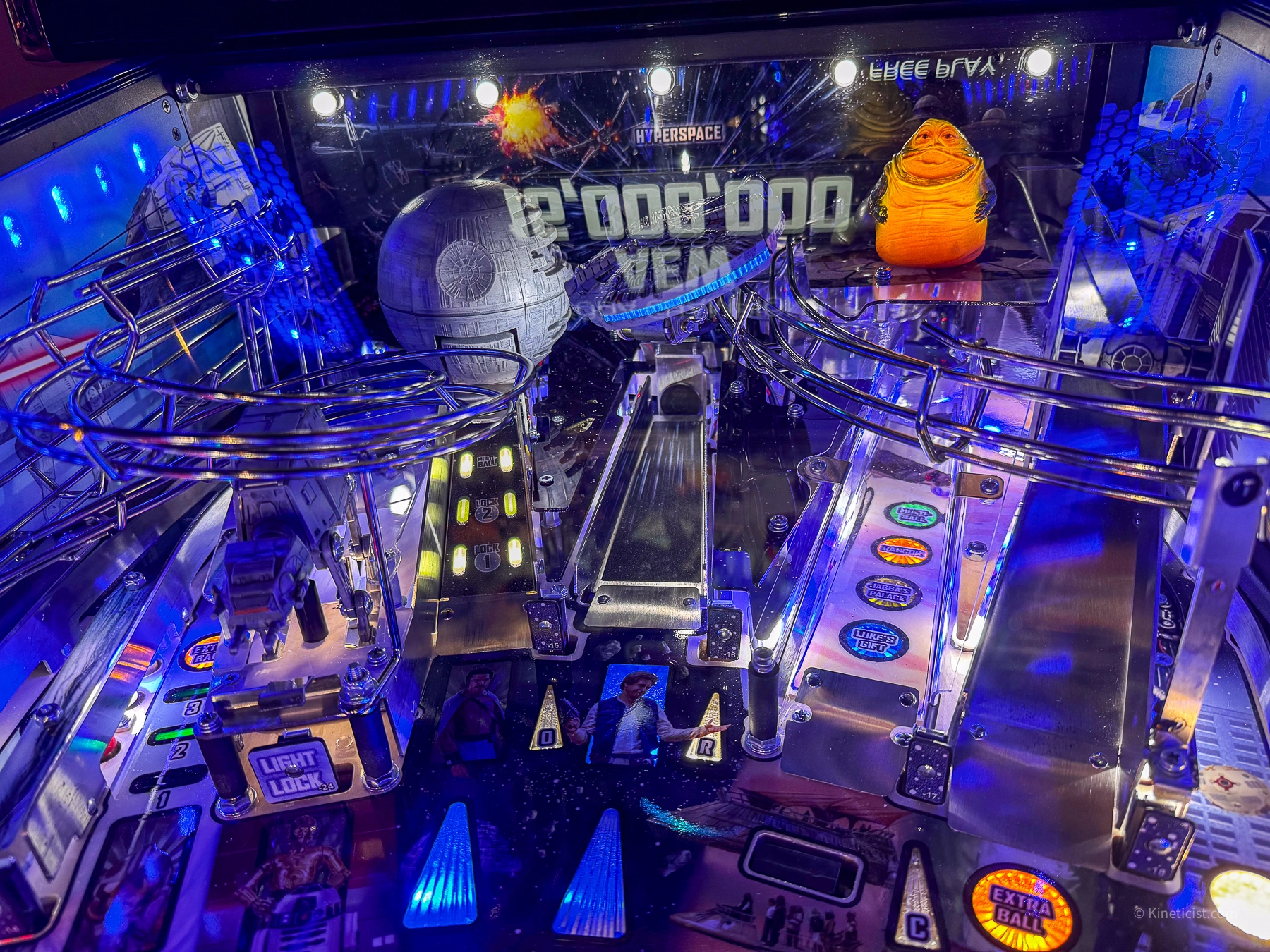
In comparison to the Steve Ritchie-helmed effort (also by Stern Pinball), released in 2017, nearly every component is improved. The art is better. The theme integration is better. There are more assets to work with. The code is more approachable. The shots are less punishing. The newly improved Spike 3 display (now 18.5” with an increased pixel count and color depth) is better. The upgraded sound system (with dedicated tweeters and midrange speakers in the backbox) is worlds better.
Borg developed a playfield that’s perhaps one of his most interesting and approachable layouts since The Walking Dead. He gives players 9 core shots to hit, spread across the playfield in a typical fan layout. Some shots are more challenging than others, and there’s enough variety in how each shot returns to keep things interesting.
The Jump to Hyperspace shot (a motorized lift ramp on the Premium and LE) is kinetically satisfying, with echoes to 2003’s Lord of the Rings. The left VUK that kicks up to a swirly wireform return (reminiscent of the one from his 1992 Data East Star Wars effort) is fun to shoot. The Death Star eats the ball!
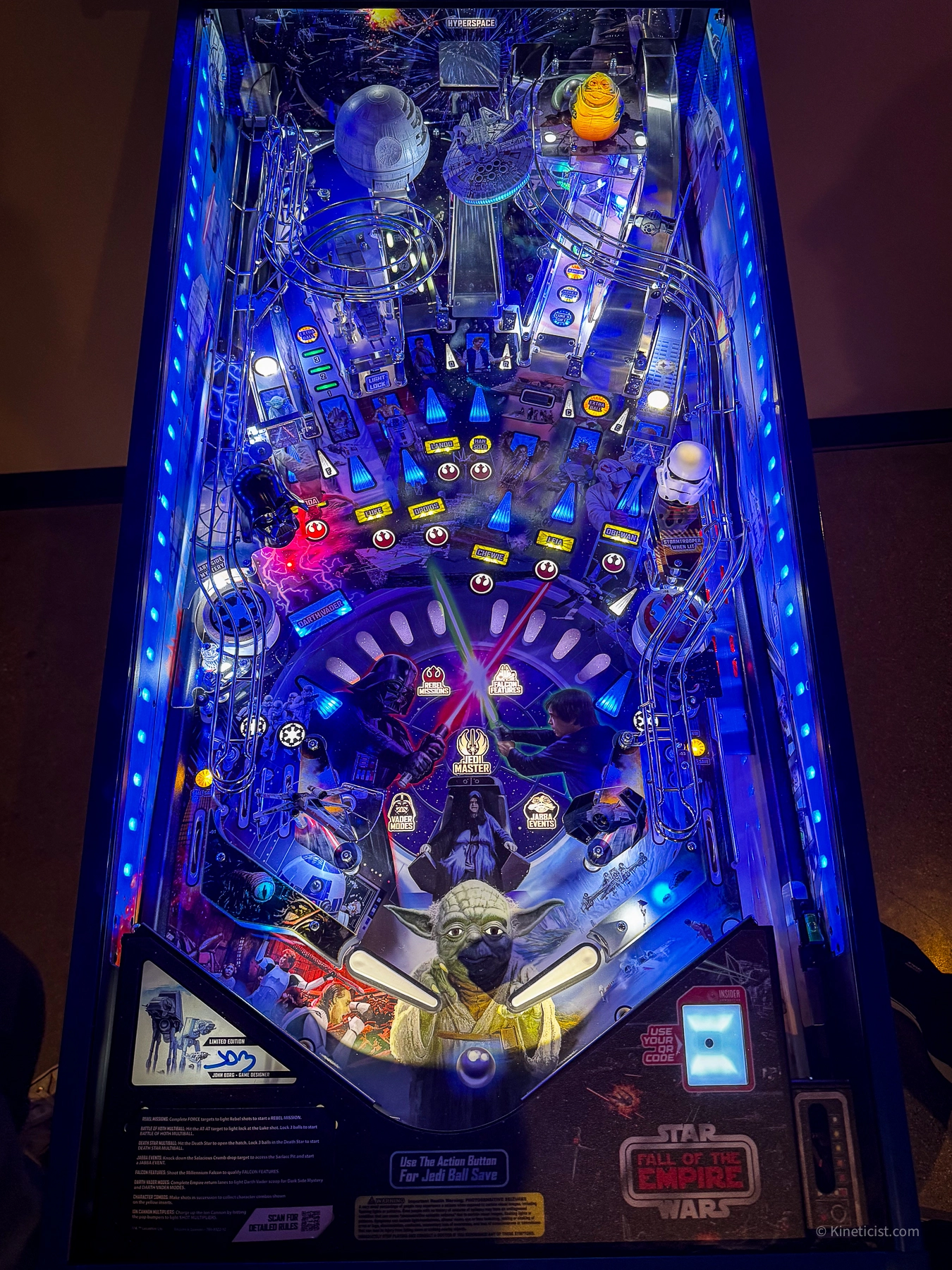
Shooting it didn’t feel like another Borg game, which may seem like a dig, but it’s not. Borg, like most long-time pinball designers, has a particular house style to his games. Orbit shot through pops. Key bash toy or ramp shot up the middle. A difficult scoop shot off to the side. Double inlanes on the left. Sometimes brutal gameplay with unforgiving shot geometry.
He deviates from a lot of that here. For example, he eschews a more traditional pop cluster with left and right single pop bumpers, one for the light side and one for the dark. These are located at the mid-point of the playfield and cause a lot of dynamic side-to-side action that never felt too dangerous. There’s a Darth Vader scoop off to the left of the playfield, but it’s not as tricky as those found on games like Guardians of the Galaxy or Metallica. Instead of a core bash toy, there’s a bash lock system (I am Groot?) that doubles as a ramp.
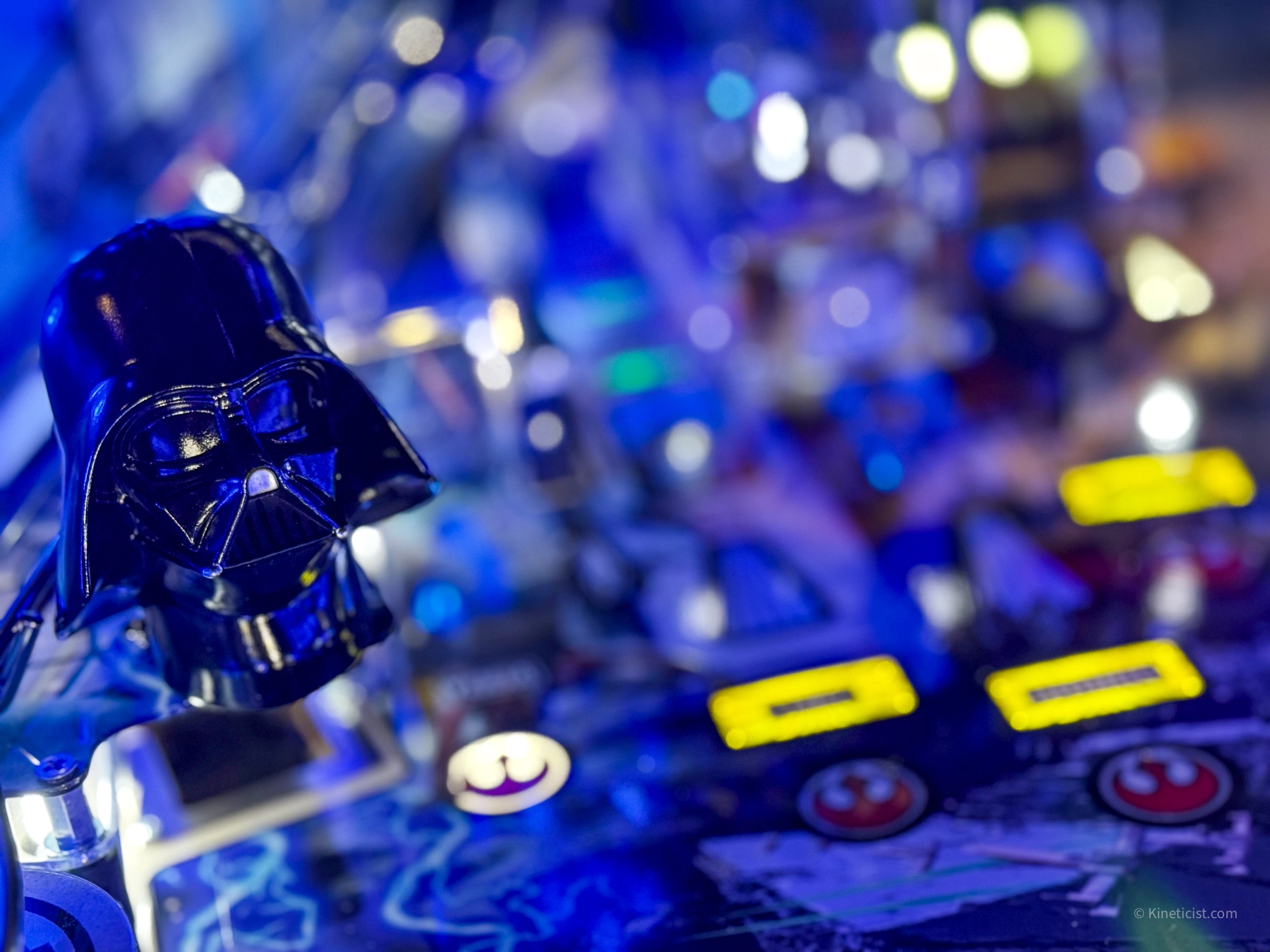
The shots are all quickly findable, save for the Death Star shot, which, depending on your typical shot accuracy, you may find difficult at times. Many major shots could also be hit from a well-placed backhand. Once you find them on the flipper, it can be easy to get into a flow state on this game and fall into a rhythm of shooting all the major shots on the fly.
While the motorized AT-AT toy and Death Star lock will get a lot of attention, it didn’t feel like there was a key mech in the game, particularly when compared with highlight mechs found in recent releases like King Kong: The Myth of Terror Island and Dungeons & Dragons. From that perspective, the game lacks a standout pinball moment.
Early Code & Spike 3 Impressions
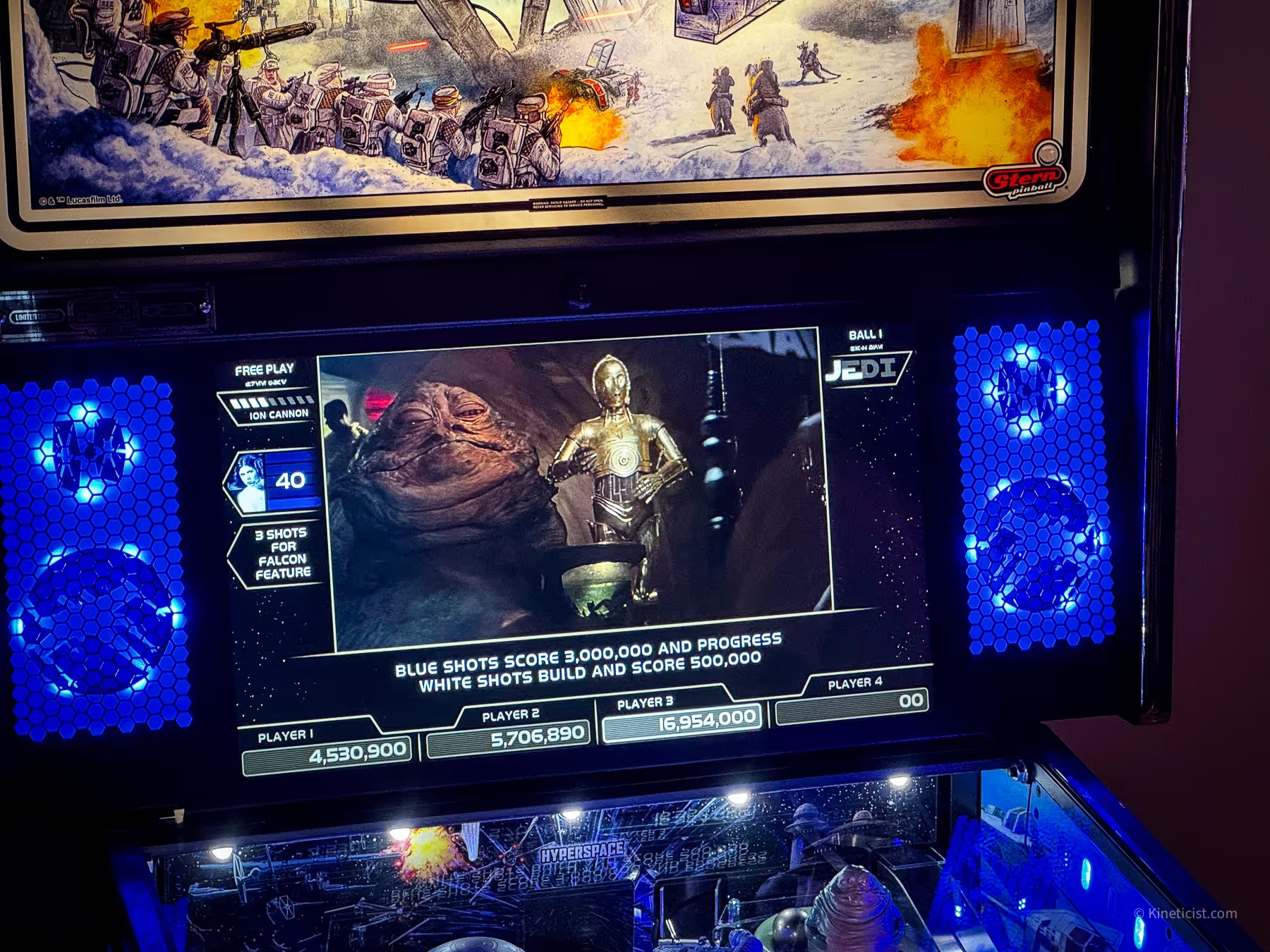
The code, already at .83 (a nod to Return of the Jedi’s 1983 release date), felt well-developed, particularly for a pre-release game. Raymond mentioned that most everything he wanted was in there, except for some of the game’s final wizard modes. It was easy and intuitive to get into a Rebel Mode and then play those out, with a few risk-reward moments built in. The two main multiballs (Death Star Multiball and Battle of Hoth Multiball) were accessible. The game’s screen assets are plentiful and used well throughout.
Speaking of the screen, I was impressed with the new display used in Star Wars: Fall of the Empire. Part of a slew of Spike 3-associated upgrades, the screen is noticeably larger without feeling out of place in the standard footprint of a Stern backbox. It’s brighter, the colors are more vibrant, and it has a higher resolution. I also appreciated what seemed like restraint from the graphics and animations department, as instead of using the extra real estate to throw a bunch more stuff at the player, they seemed to focus more on adding emphasis to existing information and leveraging whitespace to help the player more efficiently scan and process important game info like mode instructions or feature progress.
During an early demo, John Borg took a moment to turn the volume on the game up to max before plunging his ball. As the John Williams score swelled and the space opera sound effects kicked in, it reminded me of a childhood memory of my dad testing out a recently upgraded home theater system with whatever version of the original Star Wars films we had on hand. For the longest time, those movies were the benchmark of visual and auditory spectacle, and in that sense, it makes sense for Stern to lean into the IP as they launch several upgrades to their audiovisual components.
Speaking of Borg, while I was focused on getting as many plays on the game as I could for this review, friend of Kineticist Jordan Allen of HUPChallenge interviewed the designer about this project. He asks, "Do you still feel like it's your first day every time you come here?" Borg answers, "Oh yeah. I'm pounding from start to finish on all of these just to make them as good as I can get them."
Which Trim is the Best?
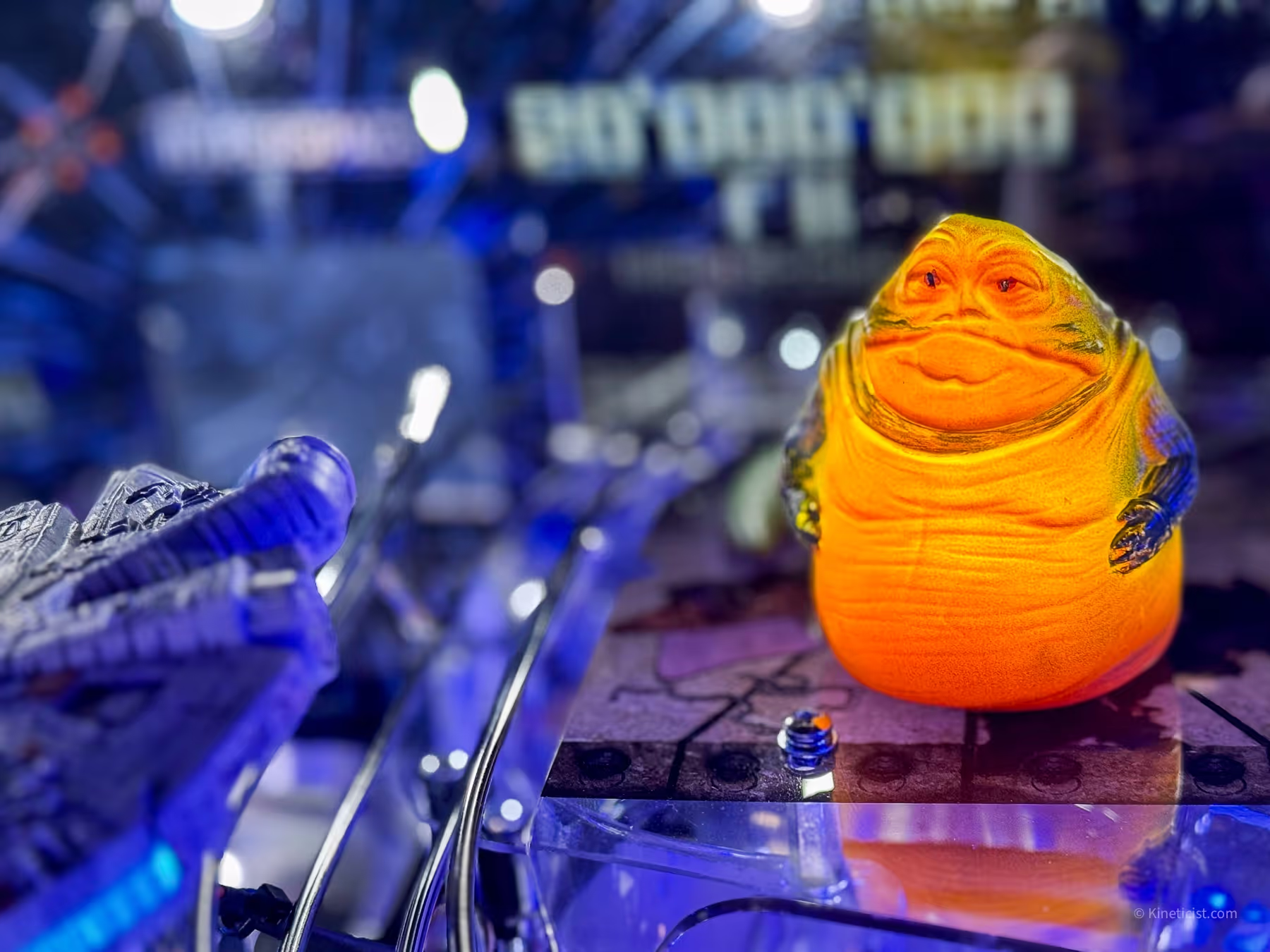
I tried to split my time evenly between the Pro, Premium, and LE models of the game. As is typical of Stern releases, the LE was the nicest overall package, as add-on features like Expression Lighting, powder-coated armor, and a mirrored backglass do give the game a more elevated, collectible feel. LE and Premium games feature a couple of fun playfield extras, too, like the motorized Hyperspace lift ramp and magnetic Force Save feature, which allows a player to save a ball by using the Force (the action button), which triggers a magnet that holds the ball just between the flippers before flinging it back into the playfield.
Stepping down to the Pro model, you lose these kinds of flourishes, but otherwise, it plays the same, if not a touch faster than the other trims. If you’re someone who isn’t incredibly invested in the theme and just wants to have the latest game at home, or maybe if you operate games on location, the Pro would be the way to go.
It’s Star Wars
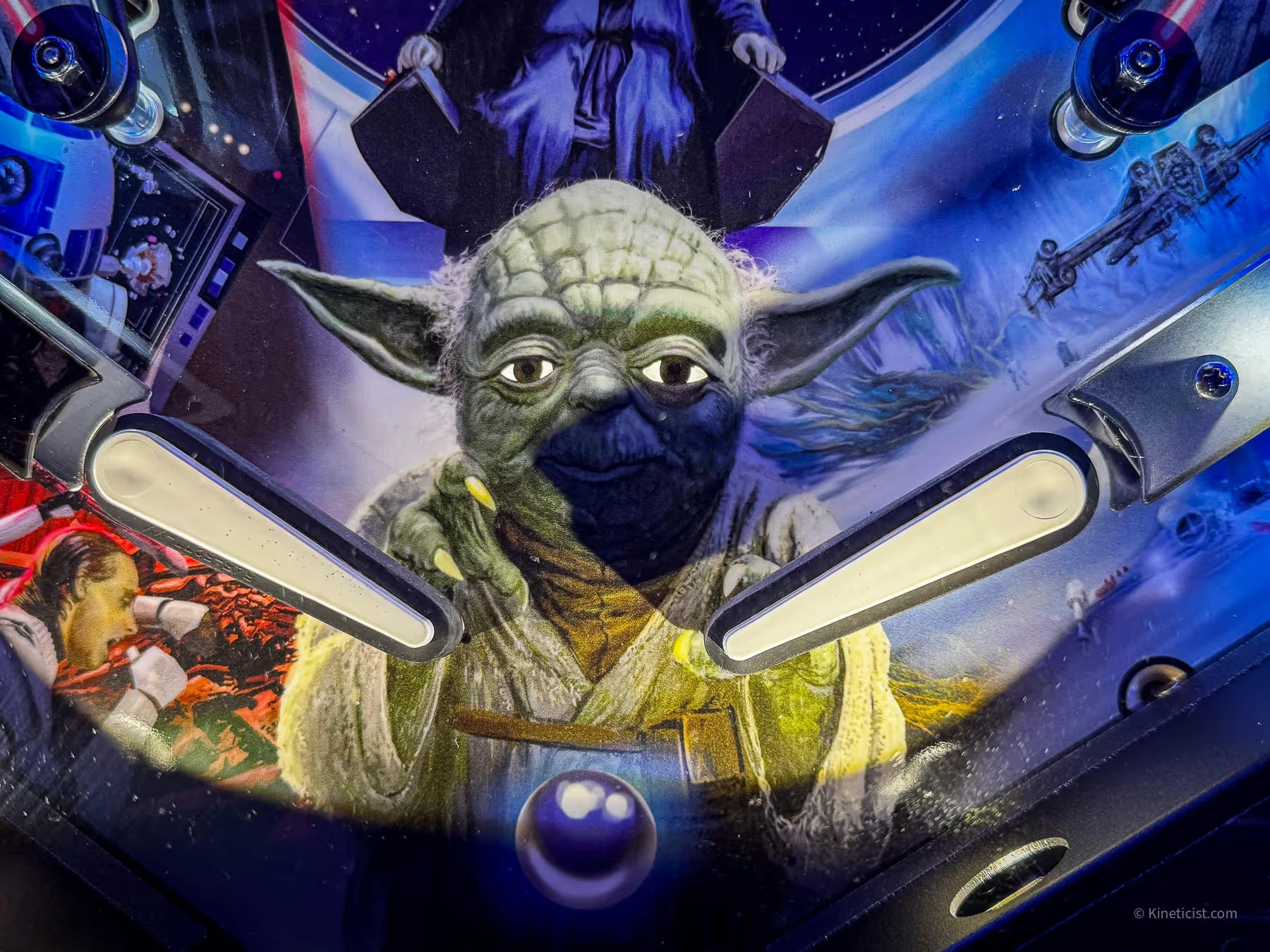
Speaking of being invested in the theme, this is one of the big components holding this game back for me. It’s a great Star Wars game. Maybe the best Star Wars pinball game ever made. But we’ve seen this movie–and this game–before, at least six times before, to be exact. (Stern Star Wars, Star Wars Home Edition, Sega Star Wars Trilogy, Data East Star Wars, Hankin Empire Strikes Back, Sonic Star Wars).
I know I’m bored by these characters and this story in this universe, and based on surveyed readers and those I’ve talked to, I know I’m not the only one. Star Wars franchise fatigue is a real thing in pop culture, so I’m not sure that the IP is as big a home run as it was, even in 2017, when the last game was released.
I was initially excited for Stern to explore new territory in this game, even if that only meant delving deeper into story beats from the mainline films, rather than rehashing what was already mined previously. While I’m told Stern did explore ideas around original storytelling, they ultimately settled on a safer approach that focuses on familiar nostalgia over novelty and innovation. For the audience I think they are targeting with this release (casual and location players who are new to pinball), this is clearly a more lucrative approach.
Star Wars: Fall of the Empire checks all the boxes for a Star Wars original trilogy game and improves on its predecessor in several key areas. It’s fun to shoot and approachable for new players. It should perform just as well, if not better, as the last game did on location, where the Star Wars pedigree and the improved screen are sure to be a draw.
It’s the best Star Wars game I’ve ever played, but, at the end of the day, it’s still just a Star Wars game.











%202023%20an%20attendee%27s%20guide.avif)

